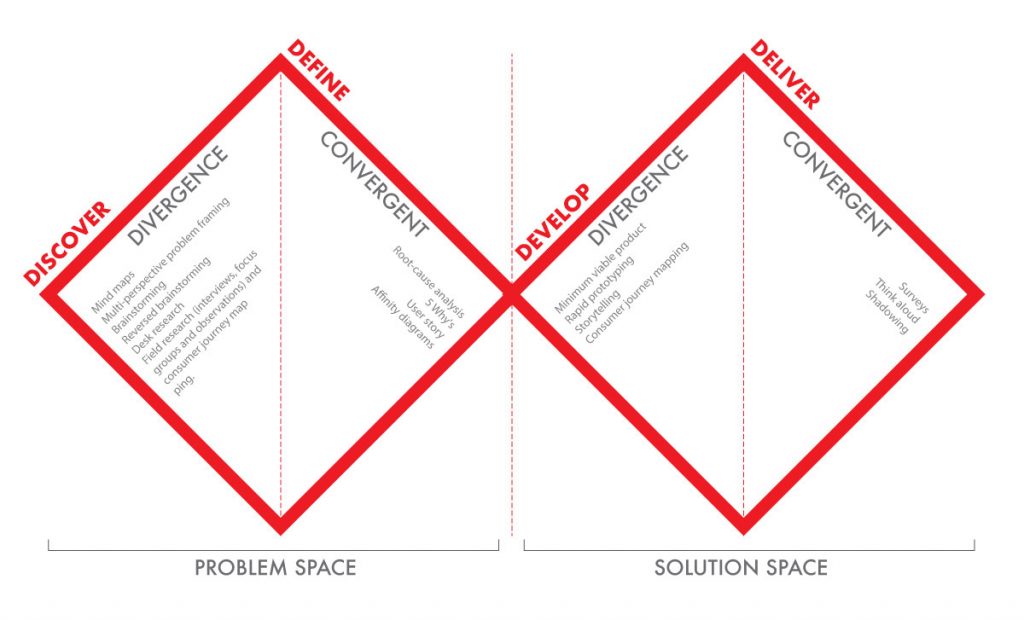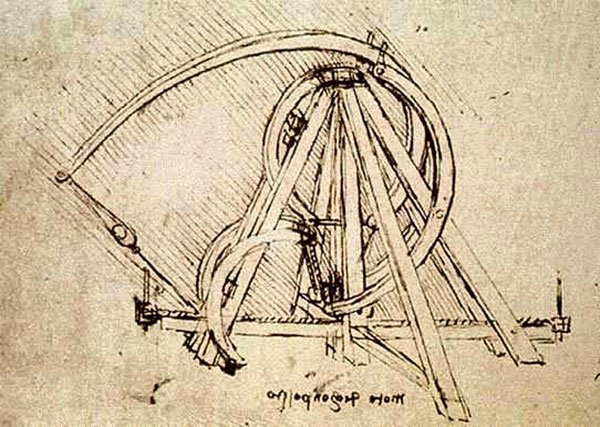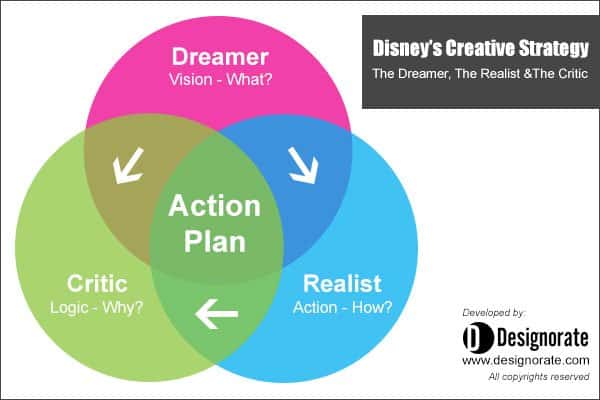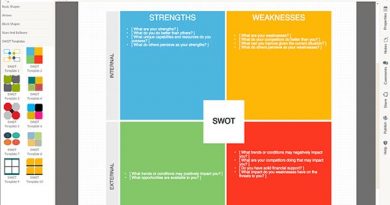Creative Thinking: Inspired Lessons from Leonardo Da Vinci’s
Leonardo Da Vinci was not only a master of art and science but also a great creative thinker with an extraordinary ability to look at the world from a creative perspective. His creative thinking skills enabled him to achieve inventions and find new solutions in different fields, including art, architecture, music, mathematics, and engineering. What lessons can we learn from Da Vinci to fuel innovation inside companies working in the creative sector?
Creativity and innovation are considered essential factors to push business to success. Many business leaders consider innovation one of the critical factors to improve a company’s competitive position in the market. As discussed in Creative Diversity: Doblin’s 10 Types of Innovation, the broader definition of innovation includes applying creativity in every project process. Therefore, employees in different positions inside the company should be able to innovate and see situations from new perspectives. This ability can be acquired by practising these lessons inspired by Leonardo Da Vinci’s critical thinking.
Examples of the Creative Thinking Skills
In his book, How to Think Like Leonardo Da Vinci: Seven Steps to Genius Every Day, Michael Gelb studied Da Vinci’s inscriptions and tried to analyse how he used creative thinking, his routine, and how we can learn from his lateral-thinking. The lessons below are inspired by his book and modified to target companies and individuals working in the creative sector to drive innovative ideas and new insights.
Change the Thinking Pattern
When faced with a problem, the human mind follows specific thinking patterns. These patterns are chosen based on the experience and previous knowledge of the problem. Common patterns limit the human brain’s ability to reach creative solutions or ideas. Therefore, one should think in different patterns to solve the problem. A number of tips can be used to explore and create ideas behind common thinking patterns, such as the following:
- Break away from existing assumptions – Thinking about a problem is usually aligned with a number of assumptions. These assumptions typically limit the ability to find creative solutions. Thinking beyond these assumptions can contribute to finding other perspectives that can help in solving the problem.
- Rephrasing the problem’s definition – Usually, we think about the problem from one perspective or meaning. Asking questions and exploring the problem from different perspectives can help find creative solutions. Many tools can be used to explore the other sides of the problem, such as the TRIZ Method, the SCAMPER Technique, The Six Thinking Hats, and mind mapping.
- Reverse brainstorming – In some cases, the problem seems unsolvable, and the team fails to find creative ideas to solve it. At this point, the reversing brainstorming technique can help solve the problem or reach creative ideas in solving it.
- Use different Media to express ideas – Part of the creative thinking methods employed could include using materials to visualise ideas and reach solutions through clay and games. Lego Serious Play is one of the tools that can help the team visualise ideas by building Lego models and using them to solve the targeted problem.
In real life, one of the examples of changing the thinking pattern is the Tefal Thermo-Spot used in its kitchen pans. Solving the problem of identifying the temperature of the pan bed is related to specific patterns such as temperature devices. However, linking this problem with another pattern, such as the colour change, helped to reach a simple yet innovative solution for heat detection in Tefal products.
Connect the Unconnected
Changing the patterns is related to another method: connecting the unconnected. One of the methods to find solutions and creative ideas is to connect the dots between prior ideas with other incidents or elements in nature that do not directly link with the main problem to develop novel solutions. For example, Newton was able to find a solution for the law of gravity law, connecting his thought with the fall of the apple from the tree. While Da Vinci was thinking of a new transportation method, he threw a paint-filled sponge against the wall and tried to imagine the stain as a horse with four wheels. So, he thought people could transport using a method with two wheels instead of four legs. The way of thinking requires analytical skills to build these connections.
In the early 1990s, NASA’s space telescope, Hubble, was launched with a flawed vision problem that prevented the instrument from bringing starlight to a crisp focus. The solution for this problem came to James Crocker, a senior engineer at Ball Aerospace Corp., standing in the shower during a trip to Germany. Crocker noticed showers are designed with handles that flip down and move to fit the user’s comfort. So, he connected this design with Hubble’s problem and reached a solution by adding little mirrors that reply and refocus the light from the telescope mirror into the spectrographs and the FOC. This solution turned Hubble from a disaster to one of the greatest NASA inventions.
One of the tools that can be used to connect the unconnected is mind maps. Visualising the situation in relation to related and unrelated elements can draw connections between different elements while building new relationships.
Independent Creative Thinking
As we mature, we believe everyone around us is observing and expected to agree with us. Thinking from other perspectives, such as team members or managers, stresses our ability to innovate. Others’ opinions should not limit the creative or innovative process. Otherwise, it will fail to achieve its target to find new ideas or solve problems.
Controlling the ideation process and forcing the team to think in specific directions is one of the common reasons that may result in failed brainstorming sessions. Facilitators and stakeholders should give the space to open up avenues for different ideas –especially unexpected ones to develop in the meeting to open pathways to achieve innovation.
Observation
Observation is a crucial element in Da Vinci’s creative thinking methods. To explore new patterns and find solutions in unrelated places in nature, the team should be able to observe other designs and problems to find further information, explore related ideas, and inspire creative solutions for the existing situation. The examples above started with observing specific actions or objects and using inherent, as well as external, ideas surrounding these objects to solve the existing problem.
One of the examples of using observation in reaching new ideas is Archimedes in the bathtub. He noticed that the water level had risen once he got into the tub. This observation enabled him to calculate the density of the gold used in the King Hiero II crown, the golden wreath.
Uncertainty
The innovation process finds new creative ideas or improves existing products or services. This process can also be achieved by asking questions and doubting the current solution to evaluate it and reach a better one. This would be innovation through negation. Many creative problem-solving methods, such as the SCAMPER method, ask questions to explore the problem from different perspectives rather than one point of view. Think of the Double Diamond Design Thinking process, the divergent thinking stages such as “Explore” and “Develop” appreciate uncertainty, which is one of the key concepts that can help generate ideas. In contrast, the convergent stages aim to filter these ideas.

Creative Imagination vs. Logic Thinking
While many companies can find creative design and product ideas, they still need to reach a final product that can be delivered to the consumer. The reason is that there is no balance between imaginative and logical thinking. Many creative ideas start with dreams or imaginary thoughts and turn into reality through logical and effective analysis of all the factors related to turning it into a final product.
Disney’s Creative Strategy is one of the methods that contributed to achieving this balance. Walt Disney was known as a great idea explorer, and his method depended on thinking of the creative idea from three perspectives: the dreamer, the realistic, and the critic. Each perspective tends to analyse the idea from one side to ensure it will achieve success in the market.
In addition to the above, other lessons can be learned from Da Vinci’s life, such as maintaining curiosity and having an eager mind to learn and observe. In addition, he was an exceptional athlete and was known as the strongest man in Florence. So, a proper balance of a creative and inquiring mind and a healthy body may be necessary. The creative process consumes large amounts of energy, which should be considered in companies working in the creative sector. Companies should consider a healthy environment for their employees to work to improve their ability to innovate.
Conclusion
Leonardo Da Vinci’s life as a creative thinker provides inspiration and lessons to learn for individuals and companies working in the creative sector. The lessons above directly relate to the design and innovation process inside companies. Also, they are linked with different creative thinking and problem-solving tools and methods which can be implemented to connect different patterns to reach creative ideas and solutions.










